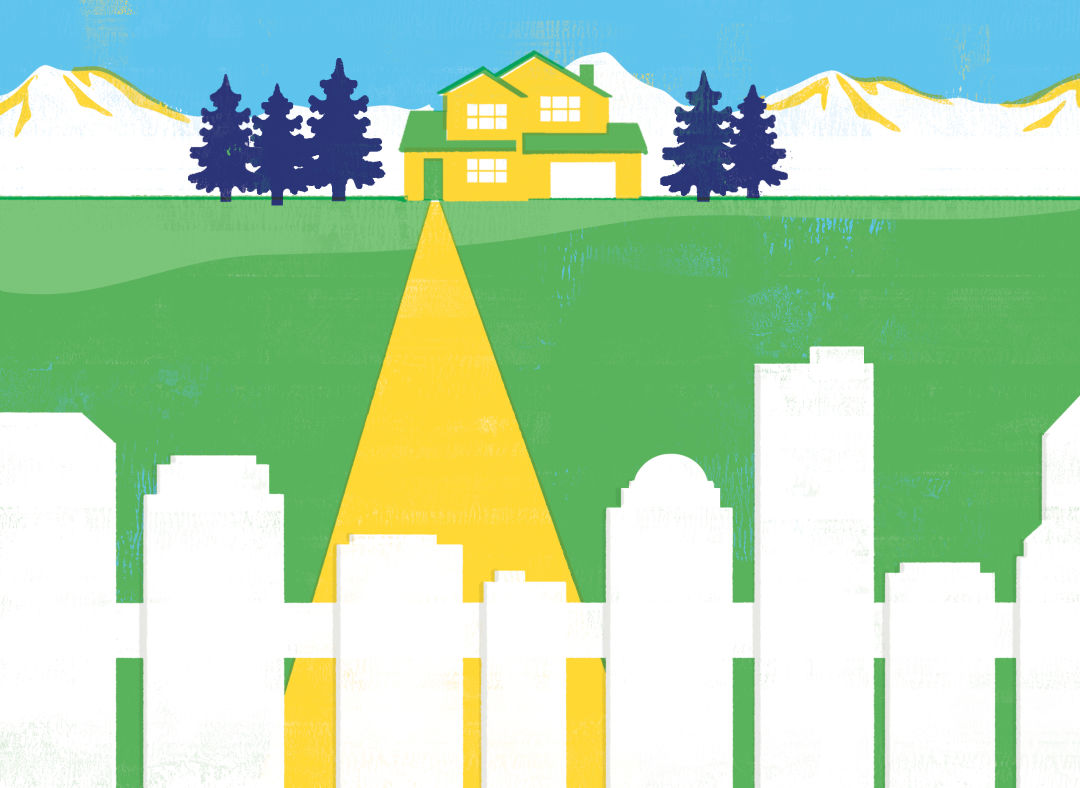It’s Tough to Buy a House in Portland Right Now

Image: Chris Gash
Remote work wasn’t the reason Dwight and Carla Hager decided to move out of their house in Portland’s Reed neighborhood last summer, but it blew their list of possible destinations wide open.
Dwight’s commute used to take him to either Kaiser Permanente’s Sunnyside or Hillsboro facilities, depending on the day. But when the COVID-19 pandemic hit, his call center shifts turned into work-from-home days. The new schedule—coupled with Carla’s planned retirement in a few years—meant the two could potentially have moved as far as McMinnville, Dwight says. They ultimately settled on Wilsonville as the sweet spot between city amenities, open space, and a reasonable commute.
Like the Hagers, plenty of Portlanders jumped farther out from the city in the past year. The housing market is surging throughout Portland and the surrounding counties, fueled by record-low interest rates and a desire for more space during a pandemic that’s kept many families cooped up together for months on end.
“An urban-to-suburban trend has been something that’s been widely talked about,” says Terry Wollam, managing broker at Wollam & Associates in Vancouver. “It’s not just urban-to-suburban, but it’s also suburban-to-rural.”
Wollam says he’s seen increased interest as far up Interstate 5 as Kalama and Kelso. On the Oregon side, Clackamas, Sandy, Boring, and Damascus have all become more popular destinations, according to Christopher Love, managing broker at the Woodstock office of John L. Scott Real Estate.
A recent John L. Scott Portland-area analysis shows a pattern of shrinking inventories and faster sales in the second half of 2020. The percentage of homes with pending sales in their first 30 days on the market hovered at 40–50 percent in 2019, but has been above 60 percent since June. The same pattern can be seen to an even greater degree in Clackamas, Washington, Columbia, and Clark Counties, where the 30-day-sales percentages ranged from about 68 to 86 percent between June and November 2020.
There’s another, less-conventional indicator of rural growth, Wollam says: a booming market for septic systems in new houses beyond the reach of municipal sewers. Cory McNair, owner of McNair Septic Design and Consulting in Clark County, just over the river in Washington, says 2020 was one of the company’s busiest years.
Some of the growth was in repair work, he says—existing systems failing under heavier use—but much of it was also in new systems for fresh construction in towns like Yacolt, Woodland, and Kalama.
It’s easy to see where the demand comes from. More than 800,000 Oregonians—around 40 percent of the state’s workforce—are capable of remote work based on their industries, according to a July 2020 report from the Oregon Employment Department.
Working from home makes long commutes less of an issue, and it pushes people farther from the urban core in search of roomier houses with space for work, school, and recreation.
“We’ve seen more people want to buy houses with pools and workout facilities, the extra amenities that they can do at home, and when they stretch outside of the city limits their dollar stretches further,” says Jessica Tindell, president of the Portland Metro Association of Realtors.
The pandemic accelerated the suburban trend, but it didn’t create it. Love says his office has seen increased interest in the suburbs and exurbs for a couple of years, driven by a desire for lower property taxes and more space as Portland proper becomes denser.
“I think [COVID] was a scale-tipper,” Love says. “That was the last straw.’”
Wollam says he’s also seen a big surge in additions and renovations. The inner Portland market also remains highly sought after, Love says, with plenty of newcomers and locals who want to downsize or upsize.
Ultimately, single-family homes with space for home offices are in demand across the board, says Gerard Mildner, academic director at Portland State University’s Center for Real Estate. Buying a new house is a long-term commitment, but buyers and even some employers seem willing to bet remote work will stick around.
For example, Riverview Community Bank switched about 100 of the 237 employees at its Washington and Oregon branches to remote work, says executive vice president Kim Capeloto. The customer service staff will eventually need to return, but there’s a backroom contingent that may be able to stay remote.
“I think we’ll still have folks that operate remotely, for sure,” he says. “I think that it’ll end up being more of an option.”




